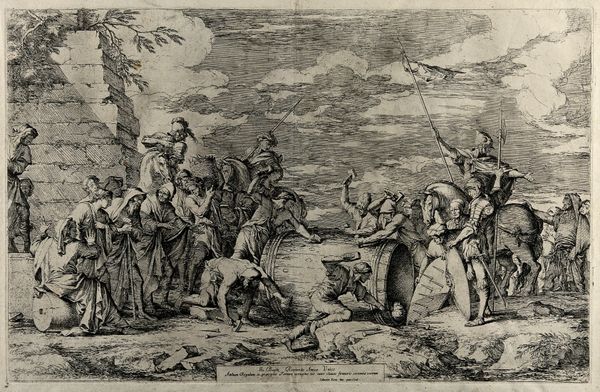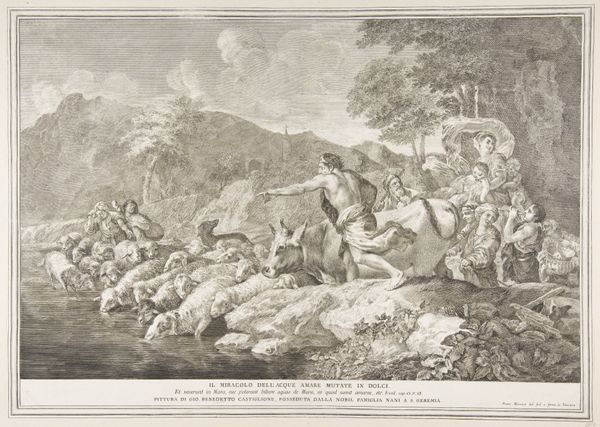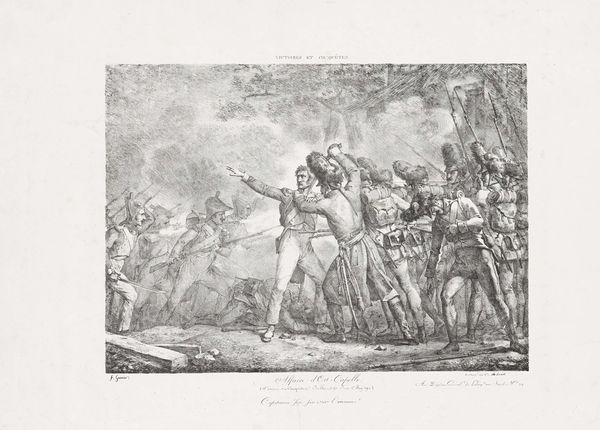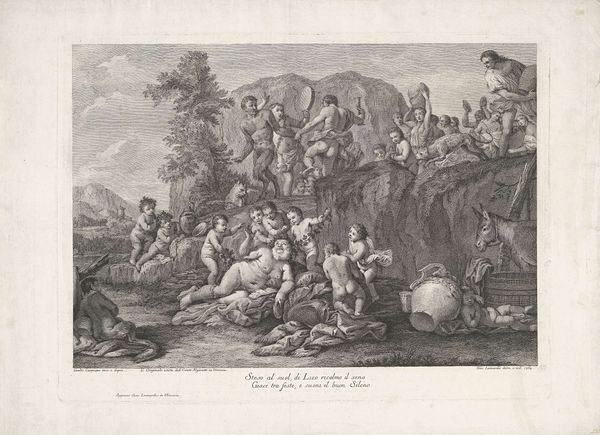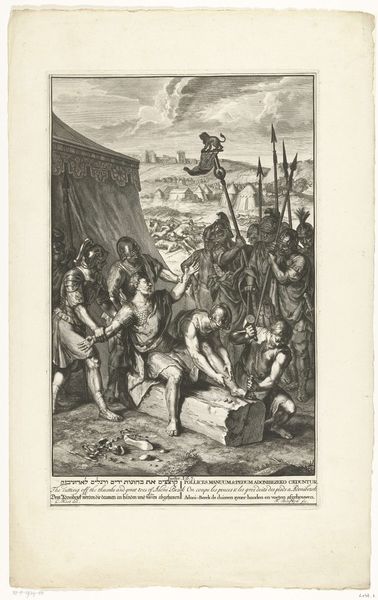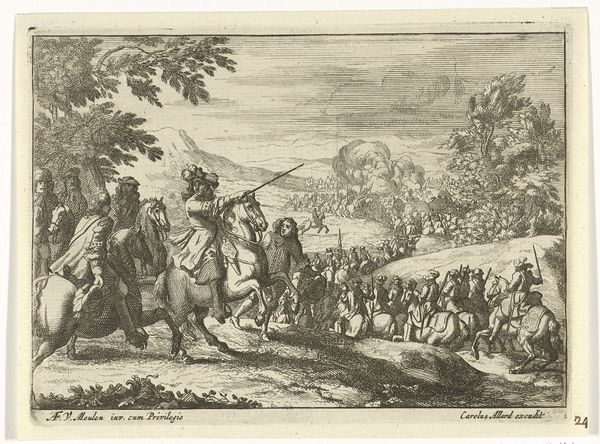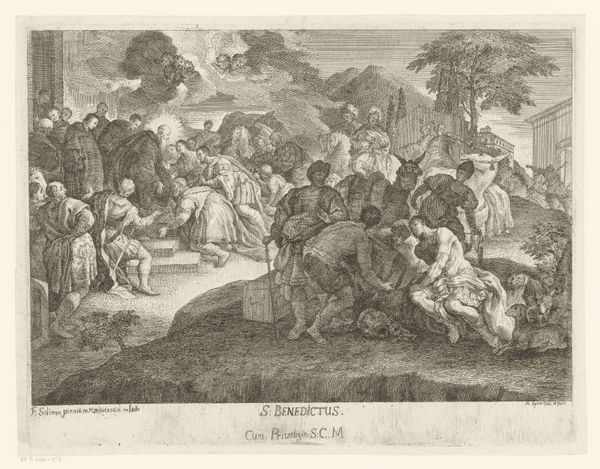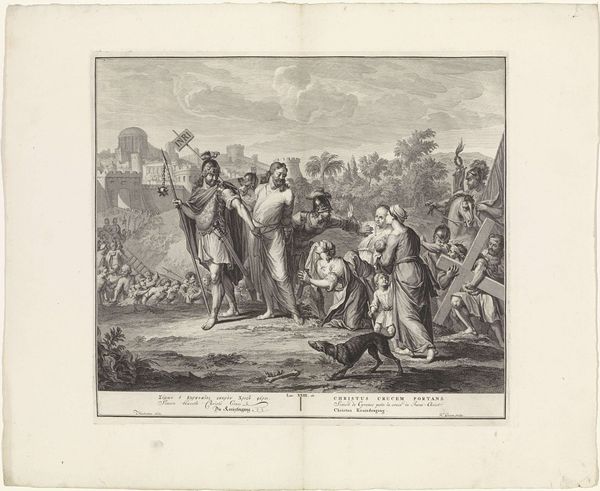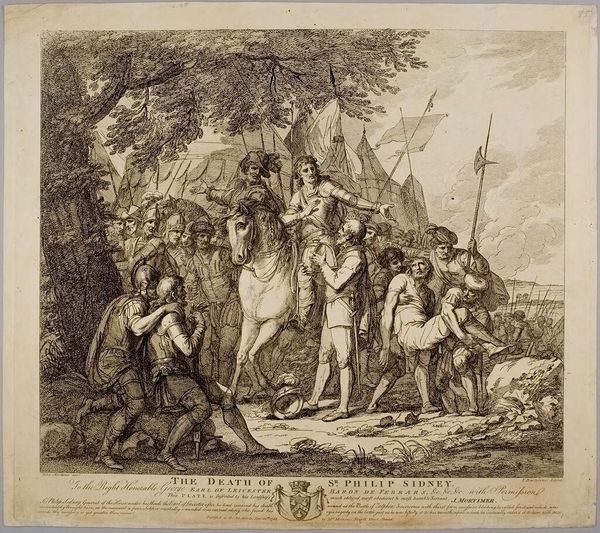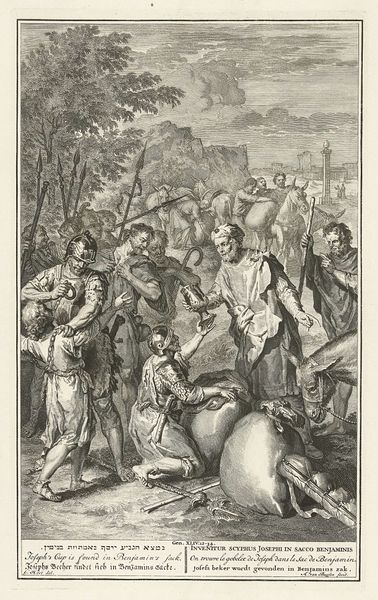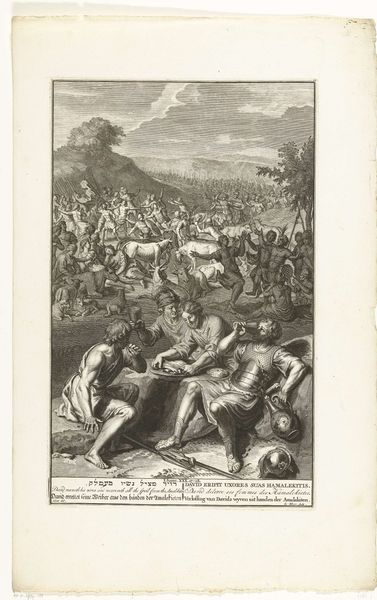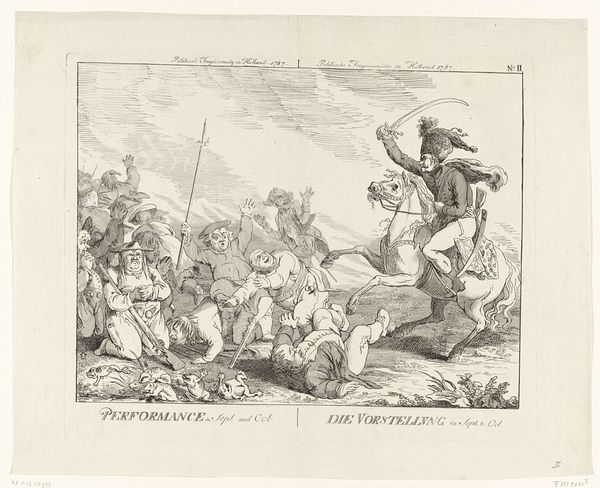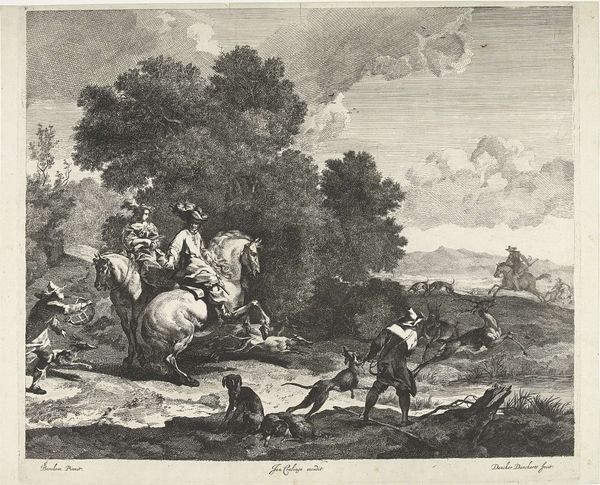
Dimensions: height 238 mm, width 278 mm
Copyright: Rijks Museum: Open Domain
Curator: This print captures "The Baptism of Christ in the Jordan," created between 1737 and 1804 by Giovanni Domenico Tiepolo. My first impression is how active the line work is. The composition almost vibrates. Editor: There's a tremendous sense of Baroque theatricality. The crowd assembled around the central act; all angled bodies, witnessing a great turning point. Baptism wasn't merely a ritual; it was a socio-political statement of religious adherence in times past. Curator: I concur about the Baroque drama. Notice Tiepolo’s skilled use of line variation. He builds volume with dense cross-hatching in areas like the foreground figure’s robes, compared to the more ethereal rendering of the angels in the upper left. The texture communicates narrative importance and visual hierarchy. Editor: It’s remarkable how he managed to balance religious symbolism and dynamic energy in one scene. Consider how the light emanating from above—literally a divine intervention— spotlights both Christ and John, elevating their importance within the gathering of many. It emphasizes the historical import and the changing religious narrative of the era. Curator: Indeed. The engraving technique, employing different pressures to create lighter and darker tones, mimics the effects of light we see in drawings and paintings from that period. The composition and execution showcase Tiepolo's mastery over line to suggest depth and form. It's a masterclass in value contrast. Editor: More than technique, let’s acknowledge what this meant. Baptism signaled entry into a new social contract under Christianity, an assertion that challenges previous beliefs. These depictions, made public via prints, served to solidify social codes tied inextricably with faith and power during that time. This engraving disseminated those views. Curator: Viewing the work today, the sheer virtuosity is stunning. We see how formal choices about line, contrast, and composition affect our reading of religious, and socio-political scenes. Editor: Exactly! And looking at it from a distance, you’re really left pondering its significance and its intended message within the culture it originated from, recognizing the artwork's integral role within a society's system.
Comments
No comments
Be the first to comment and join the conversation on the ultimate creative platform.
